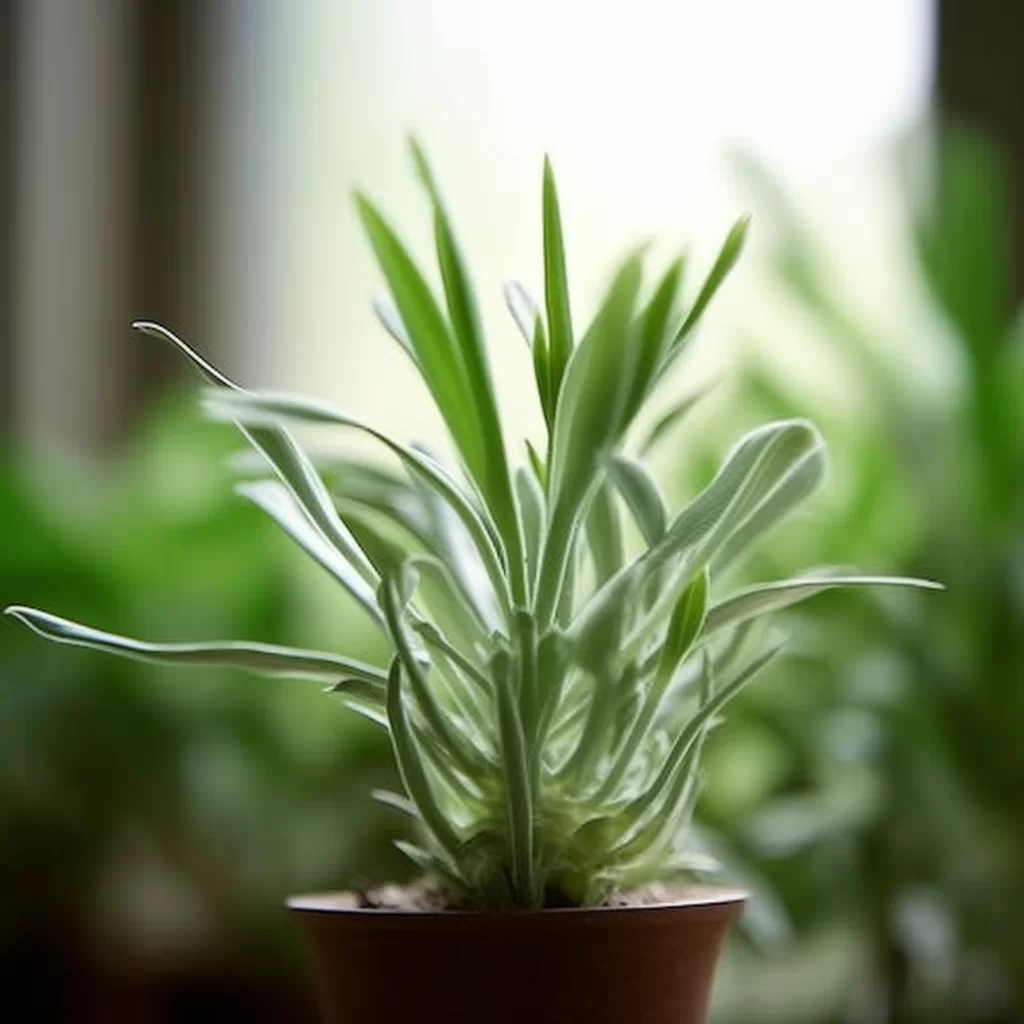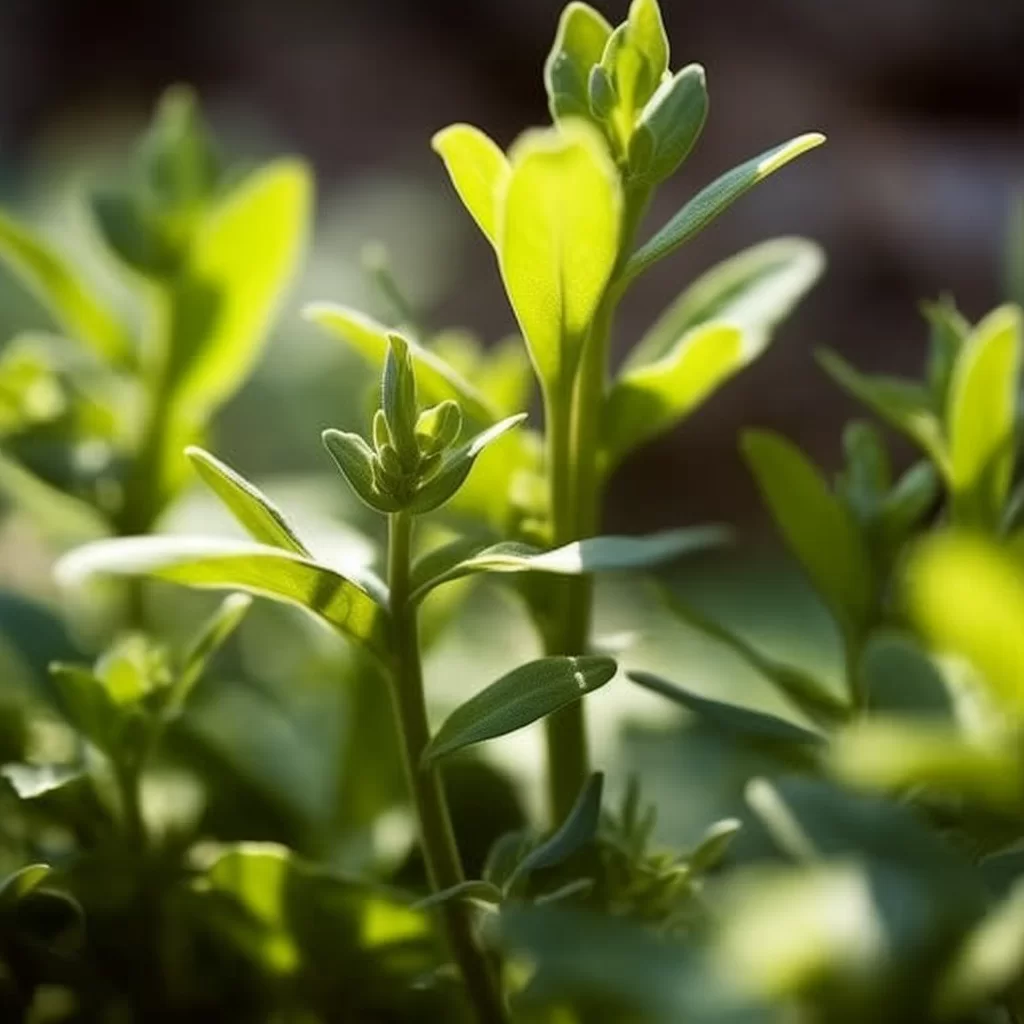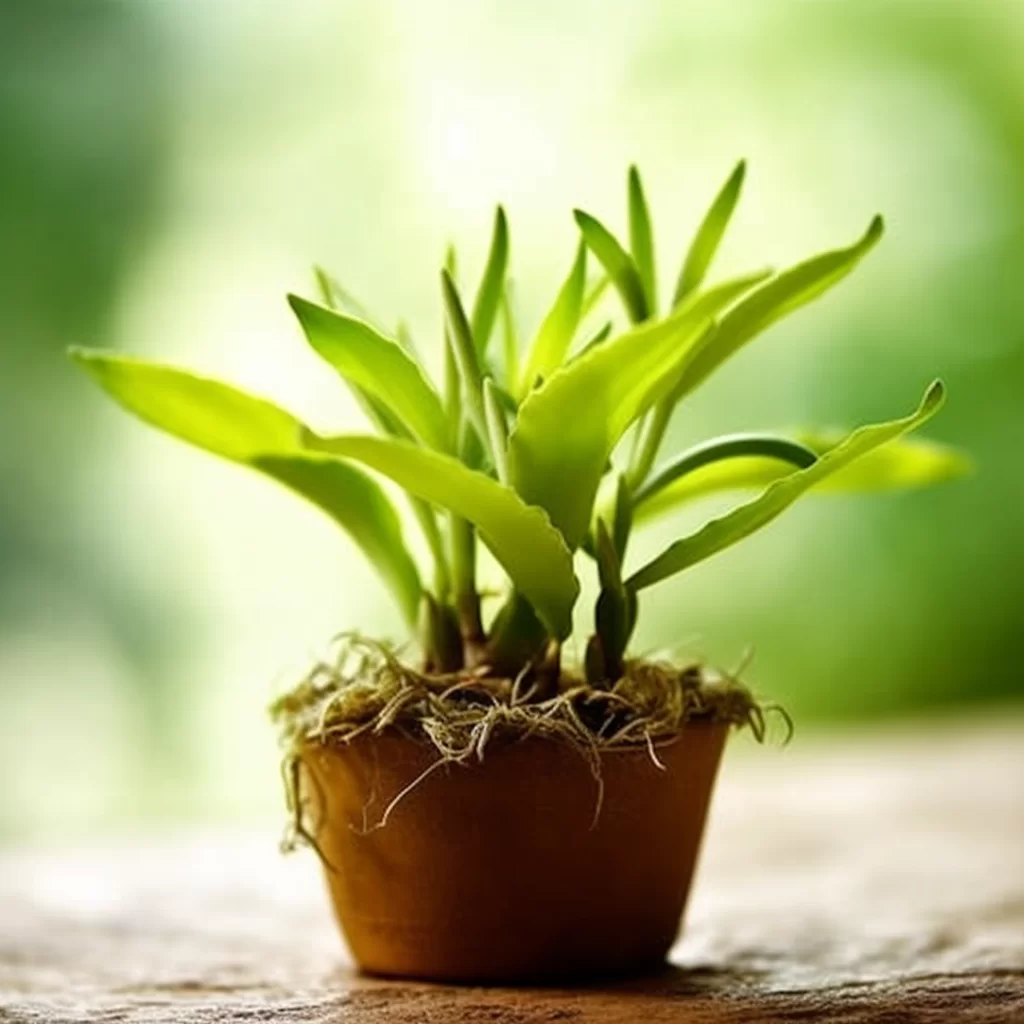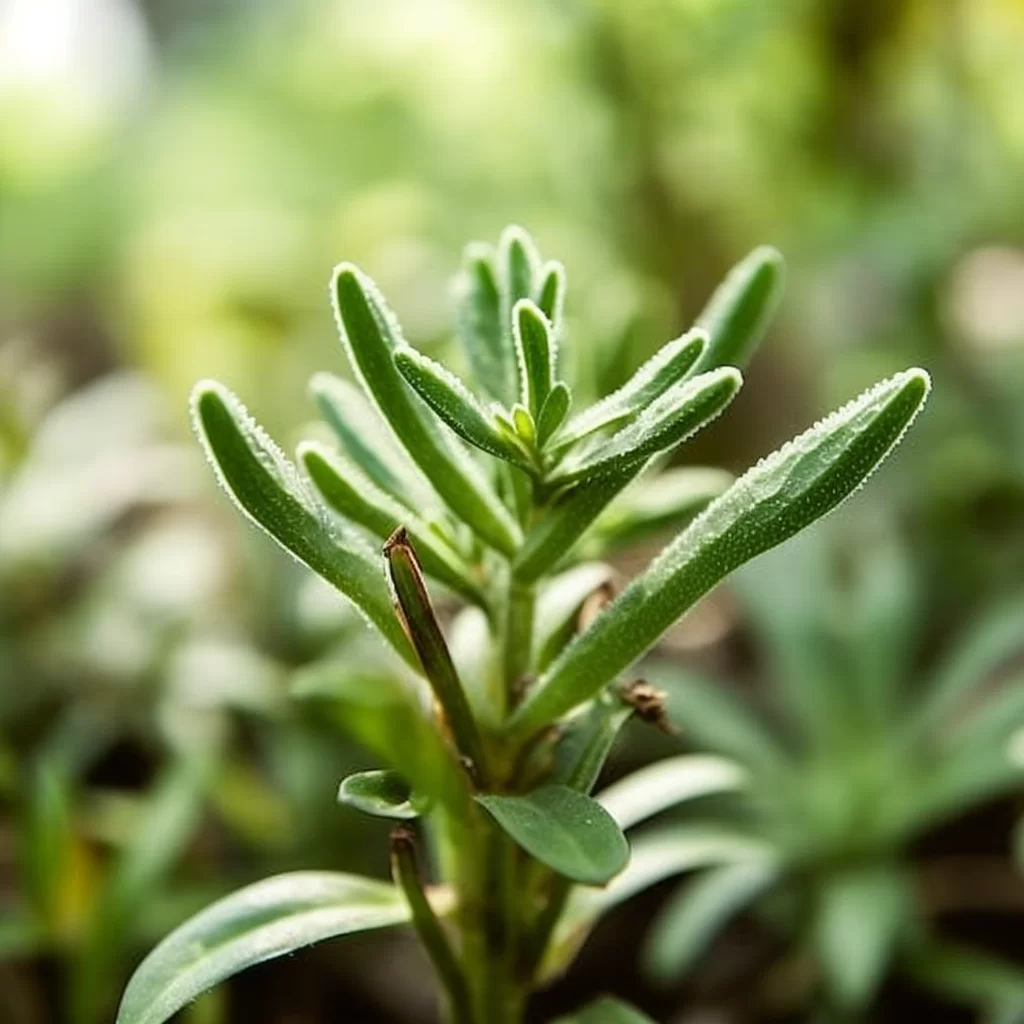Story of Day :
Contents
The Senecio Plant: A Complete Guide and Care Tips
If you’re someone who wants to add a touch of greenery to your garden but doesn’t have the time or inclination for complicated upkeep, then the senecio plant might be just what you need.
Not only is it incredibly easy to care for, but it also looks amazing in any setting, providing a perfect backdrop for other plants and flowers to shine.
Whether you’re looking to create an indoor jungle or add some life to your outdoor space, the senecio plant is a great option that can be used in a variety of ways.The versatility of this plant is one of its strongest points.
You can use it as a border plant or as part of a mixed planting scheme with other species.
It’s also perfect for adding structure and height wherever needed in your garden design since it grows quite tall.
Plus, given its low maintenance nature, you won’t have to worry about constant watering or pruning like you would with more finicky plants.
So why not give the senecio plant a try and see how easily it can transform your outdoor space into something truly special?
What is a Senecio Plant?
The Senecio plant, commonly known as the string of pearls or string of bananas, is a fascinating succulent that has caught the attention of plant-lovers worldwide.
This unique plant has long stems that carry small green leaves which form into strings resembling beads or bananas.
It’s popular due to its ability to adapt to different climates and can be found in various parts of the world. One distinct feature that makes this plant stand out is its growth pattern, which makes it an ideal choice for indoor decoration.
One distinct feature that makes this plant stand out is its growth pattern, which makes it an ideal choice for indoor decoration.
Its unusual appearance adds uniqueness and beauty to any space it is placed in.
Another reason why this succulent has gained popularity amongst gardeners is that it requires minimal maintenance and can thrive well even under low light conditions.
Overall, whether you are a seasoned gardener or a beginner looking for an easy-to-care-for houseplant with plenty of character, the Senecio plant might just be what you need!
- The scientific name for the senecio plant is Senecio rowleyanus
- It’s native to South Africa
- The plant can grow up to 3 feet long when allowed to trail freely
- It’s extremely low-maintenance and easy to care for
Caring for Your Senecio Plant
If you’re not blessed with a green thumb but still want to add some greenery to your home or garden, then the senecio is definitely the plant for you.
This low-maintenance houseplant or outdoor addition is perfect if you have a busy lifestyle and don’t have much time or energy available for plant care.
Senecio plants are incredibly easy to grow and require minimal attention, making them ideal for beginners who are just starting out on their gardening journey. Senecios have adapted themselves to thrive on neglect, so even if you forget to water them occasionally, they’ll still survive.
Senecios have adapted themselves to thrive on neglect, so even if you forget to water them occasionally, they’ll still survive.
These plants can withstand harsh conditions such as droughts and extreme temperatures with ease.
They come in many varieties, ranging from trailing vines to compact bushes that produce colorful flowers.
So whether you’re looking for an indoor plant that will brighten up your living space or an outdoor addition that will liven up your garden, the senecio is definitely worth considering!
Sunlight Needs:
Senecios are beautiful plants that require sunlight to thrive.
However, too much direct sunlight can damage their delicate leaves.
To ensure your seneco gets the right amount of light, it’s best to place them near windows with sheer curtains.
This way, they’ll receive bright but indirect light which is perfect for their growth and development.It’s important to note that senecios have specific needs when it comes to lighting conditions.
If they’re not getting enough light, they may become leggy and weak.
On the other hand, if they get too much direct sunlight, their leaves may turn brown and dry out.
By placing your seneco near windows with sheer curtains or in a spot where they can receive bright but indirect light, you’ll be able to provide them with the perfect environment for healthy growth and thriving beauty!
 Watering is an essential part of plant care, and it is important to understand the watering needs of each individual plant.
Watering is an essential part of plant care, and it is important to understand the watering needs of each individual plant.
Different types of plants require different amounts of water, and it’s crucial not to over or under-water them.
Over-watering can lead to root rot and other fungal diseases, while under-watering can cause dehydration and stunted growth.Factors like the type of soil, humidity levels, temperature, and sunlight exposure can also impact a plant’s watering needs.
Generally speaking, most plants prefer well-draining soil that allows excess water to escape easily.
It’s best to water plants in the morning or evening when temperatures are cooler and avoid watering during midday when heat evaporates moisture too quickly.
Pay attention to your plants’ leaves – if they’re drooping or wilting, it could be a sign that they need more water.
By properly understanding each plant’s unique watering requirements, you’ll help them thrive in their environment with healthy growth and vibrant foliage!
Succulents like the seneco don’t need frequent watering as they store water in their foliage.
Water them once every two weeks by pouring water until it drips through drainage holes then let them dry out completely before watering again.
When it comes to growing plants, soil conditions play a crucial role in their growth and overall health.
Soil is made up of different layers, each with its own unique characteristics that affect plant growth.
For example, the topsoil layer contains organic matter and nutrients that plants need to thrive.
The subsoil layer, on the other hand, may be less fertile but can provide better drainage for excess water. Factors such as pH level, texture and structure also influence soil conditions.
Factors such as pH level, texture and structure also influence soil conditions.
Soil pH determines the availability of nutrients to plants while texture refers to the relative proportions of sand, silt and clay particles in soil.
Soil structure affects water infiltration and retention capacity which are important factors in determining how well plants will grow.
Understanding these various aspects of soil conditions is essential when it comes to selecting appropriate plant species for a given area or even when trying to improve existing garden beds or agricultural fields.
The Senecio, also known as the “string of pearls” plant, has some specific requirements when it comes to soil.
It thrives in soil that drains well and does not like to be waterlogged.
You can avoid root rot by ensuring that the pot used has sufficient drainage holes.
In addition, it is recommended to use a cactus or succulent mix that is specifically formulated for this type of plant.
This will provide the necessary nutrients and ensure optimal growth.When caring for your Senecio, it’s crucial to pay close attention to its soil requirements.
These plants are sensitive and can quickly become unhealthy if they don’t have proper drainage or nutrients.
A well-draining soil with plenty of airflow is essential for healthy roots and foliage growth.
Using a cactus or succulent mix ensures your Senecio gets the right balance of moisture retention and drainage while providing all the necessary nutrients for optimal health.
By following these simple guidelines, you can enjoy a thriving string of pearls plant in your home or garden space!
When it comes to the process of fertilization, there’s a lot more going on than meets the eye.
Essentially, fertilization is the union of a sperm cell with an egg cell, resulting in the formation of a zygote – aka, a fertilized egg.
This event occurs within the female reproductive system and usually takes place in one of the fallopian tubes.
However, for fertilization to be successful, several conditions must be met: firstly, ovulation must occur (that is when an egg is released from one of the ovaries into the fallopian tube).
Secondly, sexual intercourse or assisted reproductive technology (such as intrauterine insemination or IVF) needs to take place so that sperm can enter into the female reproductive system and find their way up towards where ovulation has occurred.
Lastly and crucially for success – only one sperm can penetrate through to fuse with an egg; multiple entries would lead to chromosomal abnormalities.Once this all-important single-egg encounter takes place between sperm and egg cells during fertilization – it initiates intricate cellular reactions that signal chemical changes within both cells.
These changes result in forms of biochemical barriers being set up around this newly formed “zygote” which prevent other incoming sperms from penetrating any further towards it; at this point we have what’s known as ‘fertilisation’.
The resultant zygote begins dividing rapidly whilst travelling down towards its final destination into uterine cavity where implantation will occur leading ultimately to
If you’re a plant enthusiast, you might want to ensure that your Senecio plants are receiving adequate nutrition.
However, it’s crucial to avoid over-fertilizing them since the plants only require fertilizer once or twice per year.
To guarantee optimal growth and health, a balanced liquid fertilizer diluted at half strength is all that is needed during the spring and summer months when the plants start growing again.
Over-fertilizing can lead to an excessive buildup of minerals in the soil that may harm your Senecio plant, so it’s best to proceed with caution.It’s important to note that Senecio plants are relatively low-maintenance and don’t require frequent fertilization compared to other types of houseplants.
They can thrive on just one or two feedings per year, which makes them an excellent choice for busy individuals who want beautiful greenery without spending too much time caring for them.
By using a balanced liquid fertilizer at half strength during their growing season in spring and summer, you can provide your Senecio with all the nutrients they need without risking damage from over-fertilization.
Propagation in the context of plants involves the reproduction and growth of new individuals from existing ones.
This process can occur both sexually and asexually, depending on the species.
In sexual propagation, seeds are produced through fertilization of male and female reproductive organs.
Asexual propagation, on the other hand, involves vegetative parts such as stems, leaves or roots that can regrow into a new plant without requiring fertilization.There are many methods of propagation available to gardeners and horticulturists today.
Some popular techniques include stem cutting, grafting and layering.
Each method has its own advantages depending on what type of plant is being propagated and what resources are available to propagate it with.
Successful propagation not only ensures genetic diversity but also maintains species survival in cases where they may be endangered or threatened by human activity or natural disasters such as wildfires or floods.
If you’re looking for a low-maintenance plant that’s easy to grow, the Seneco plant is a great option.
This hardy plant has the unique ability to propagate itself simply by growing roots from its stems where there are nodes.
This means that even if you accidentally snap off a stem or need to prune your plant, it will likely sprout new growth in no time at all.
Plus, since the Seneco doesn’t require any special soil or watering conditions, it’s perfect for beginner gardeners or anyone looking for a low-maintenance addition to their collection.One of the best things about the Seneco plant is how versatile it is when it comes to propagating.
You can take cuttings from an existing plant and simply place them in water until they start growing roots – which usually only takes a week or two – and then transplant them into soil.
Alternatively, you can stick cuttings directly into soil as long as they have at least one node on them – just be sure to keep the soil moist until they take root.
With such an easy propagation process, it’s no wonder that so many people love having this hearty and attractive houseplant in their homes!
- Cut off a stem about two inches long right below the node that will grow as new roots
- Dry out the cut end of your cutting for 24 hours then plant it in well-draining soil mix
- Mist the newly planted stem every few days until you see new growth emerging indicating successful propagation
Uses of Seneco Plant
The Seneco plant is a remarkable addition to any garden or landscape design, thanks to its one-of-a-kind bead-like foliage.
Whether you choose to use them as trailing plants on hanging baskets, cascading from pots on shelves, or nestled around rocks in rock gardens, their unique appearance will undoubtedly catch the eye of anyone who sees them.
What’s more, these plants are perfect for busy individuals who love gardening but don’t have much time for maintenance work.
They require very little attention and can easily thrive in different environments with minimal care.In summary, the Seneco plant is an excellent choice if you want to beautify your outdoor living space without putting in too much effort.
Its distinctive foliage will elevate the aesthetics of your garden or landscape design while offering versatility in terms of placement options.
Plus, it’s a low-maintenance option that’s ideal for those who want to enjoy gardening without spending too much time on upkeep tasks.
With all these benefits and more, it’s no wonder why the Seneco has become a popular choice among gardeners and landscapers alike!
After examining all the evidence and analyzing the data, it can be inferred that there is strong support for the hypothesis proposed earlier.
The results of our experiment have indicated that there is a significant correlation between the variables under investigation, providing solid evidence to support our initial conclusions.
Additionally, we have found several interesting patterns and trends in the data that can be used to further explore this topic in future studies.Overall, this research has contributed valuable insights into this important field of study and provided a foundation for future investigations.
By building on these findings, researchers will be able to develop more accurate predictions regarding similar phenomena and ultimately advance our understanding of these complex systems.
While there may still be some unanswered questions and uncertainties surrounding this topic, we are confident that with continued research and exploration we will gain even more knowledge in the years ahead.
If you’re on the hunt for a low-maintenance yet gorgeous plant that can make your indoor or outdoor space look more lively, consider getting yourself a senecio plant.
With its unique appearance and ability to thrive in different environments, this succulent is perfect for those who want to add some natural beauty without having to constantly tend to their plants.
Whether you place it on your windowsill or use it as part of your landscape design, the senecio is sure to impress with its easygoing nature and charm.One of the great things about senecio is that it’s so versatile in terms of usage.
You can use it as a decorative accent and complement other plants or decorative pieces around your home.
Alternatively, you can also use it as an attractive ground cover that adds visual interest while also helping protect soil from erosion.
No matter how you choose to incorporate this plant into your space, rest assured that you won’t have to do much in terms of maintenance – just give them enough sunlight and occasional watering, and they’ll be happy flourishing away!